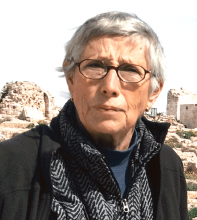You are here
Providing Syria with the means to reconstruct and recover
May 04,2023 - Last updated at May 04,2023
Syria is a land of mystery traffic jams. Despite the shortage and high price of petrol, vehicles fill the streets and avenues of Aleppo and Damascus. No one knows how Syrians achieve these bumper-to-bumper events.
During Eid, thousands of cheerful Syrians left their electricity-less homes to drive or walk through Aleppo's dark streets to the Citadel, the city's protector and symbol, to celebrate. Families gathered at long tables erected in the plaza where the Citadel stands tall in its moat to drink tea and smoke water pipes. Children surrounded vendors selling popcorn, ice cream and pink spun-sugar or rushed from place to place to release energy in the chill air. Cars blaring loud music swished by, motor bikes roared and raced.
Throughout the country, Syrians celebrated eid after eid. They took two days for Western Easter and went back to work but Orthodox Easter stretched through the four days of Eid Al Fitr. Government offices closed, shops remained shuttered or opened late. Since many people did not go to work, streets were deserted until afternoon when families visited relatives and friends. When night came, most streets and homes were dark due to the lack of fuel for electricity. Here and there a window emitted bright battery-powered white light which blazed in the darkness or the weak flicker of the soft light of a candle.
The direct 300 kilometre highway from Damascus to Aleppo passes through rich agricultural land and orchards of squat pistachio trees stretching as far as the eye can see. There are few cars and lorries on this stretch of road. For more than 100 kilometres villages on both sides are uninhabited, empty, their houses have been stripped of furnishings, doors and windows. The villagers were driven out by the war that consumed Syria for eight years before fighting wound down. Families were forced to flee elsewhere in Syrian or abroad, reducing the population from 24 to 18 million. Six million took refuge in Europe, Jordan, Lebanon and Turkey, six million were displaced within Syria swelling the already overpopulated cities and towns where violent men and boys backed by external powers took up weapons against the government.
They have been largely defeated and contained and Damascus has extended its control over 70 per cent of Syria. The US-backed Syrian Kurdish Protection Forces (YPD) hold 25 per cent of Syria's territory in the northeast and east and have seized the oil fields which produce 80 per cent of Syria's crude which used to provide enough petrol and fuel oil for domestic consumption as well as some for export. The Kurds sell some to the government and smuggle the rest to Iraq and Turkey, depriving Syrians who live in government-held areas of fuel for cars, lorries, factories, power stations and businesses. Unemployment is rife. Ninety per cent of Syrians suffer in poverty.
Turkey controls about 5 per cent consisting of the northern half of north-western Idlib province — where Al Qaeda’s Hay ’at Tahrir Al Sham rules — and several enclaves on the Syrian side of the Syria-Turkey border.
My friend Paul believes the refugees should stay where they are. He says Syria has enough people to rebuild and restore its economy. Businessman Issa disagrees. He argues there is a shortage of labour and refugees must come home. The government promotes the return of farmers who can reclaim their land and produce crops once again while urban refugees would increase demand for electricity, water, housing, and services which are already at critical levels in cities and towns.
If the refugee return were backed by the UN which would continue funding exiled families at current rates, their presence would inject hard currency into the economy. At present Syria is starved of foreign exchange and its currency has plunged from 48-30 to the dollar to 6,600-7,000 to the dollar. To buy anything Syrians need a wad of currency. For large purchases, a thick brick of notes changes hands after a quick count.
Refugees could also provide urgently needed, well trained construction workers who could rebuild abandoned villages and finish thousands of built but unfinished apartment blocks which stand empty on the outskirts of Aleppo and other cities. The flats in these buildings could house returning refugee families.
Unfortunately, Syria's fate has for years depended to a large extent on the US, which dominates the UN, imposes punitive sanctions which amount to illegal collective punishment of the Syrian people, and controls international banking. Driven by a neoconservative agenda drawn up by influential figures promoting the 1997 "Project for the New American Century", Washington wants to weaken and divide Syria. Since Syria occupies the geographic centre of the Eastern Arab world, this weakens Syria'’s neighbours, Jordan, Lebanon and Iraq and the entire region.
Most Arabs understand the solution for Syria is its return to the Arab fold and development of bilateral economic relations with Arab governments so that traders, manufacturers and investors can safely flout US sanctions and provide Syria with the means to reconstruct and recover. Additionally, the Arabs need to exert pressure on Turkey to withdraw its troops and surrogate forces from Syrian territory in the north and on the Syrian Kurds to return the area they hold to government control and effect the exit of the 900 US troops based illegally in Syria.
The object of Saudi Arabia, the Emirates, Iraq, Algeria, Lebanon, and Jordan — which are working for reconciliation with Syria — is to extend Damascus' sovereignty over all Syrian territory and ensure that the country's borders are respected.










